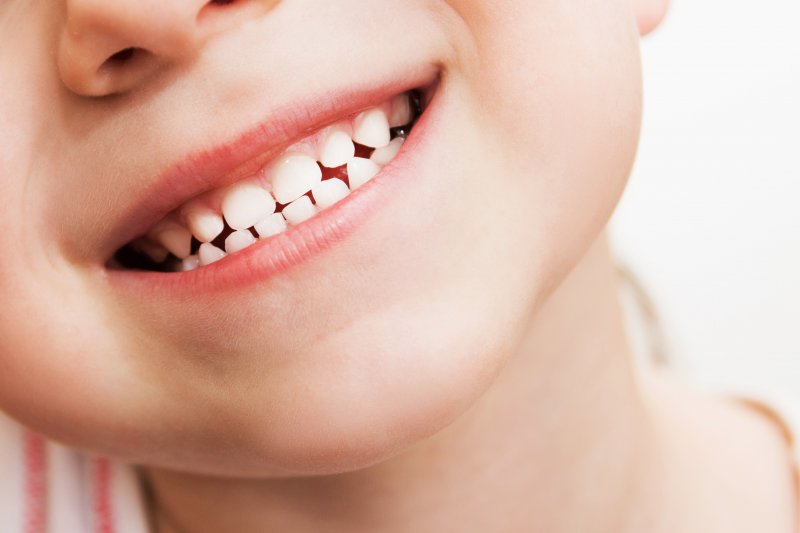
You love seeing your child smile. What was once a mouth with no teeth at all is now radiating with healthy, beautiful pearly whites. But when can you expect your child to lose their first baby tooth? What can they expect? What should you know in preparation for the big event? Let your local dentist help you and your child become better prepared while putting your mind at ease about this natural dental occurrence.
When You Can Expect Your Child to Lose Their First Tooth
In most cases, children can expect to lose their first baby tooth (or teeth) around the age of 6. This is when the incisors and front middle teeth become loose. By the time they’re between 10 and 12, the back molars are shed, and once they reach the age of 13, you can expect all their permanent teeth to be in place.
Children often lose their teeth in the same order that they came in. But remember, all kids are different, so before you start the countdown, consider that your child may not lose their first tooth at the same time as their friend at school.
What Will It Feel Like?
In the weeks leading up to the first tooth falling out, your little one will likely begin to feel it become a bit looser. They may even try to wiggle it with their fingers. Gentle wiggling can help speed the process, but help them understand that the baby tooth is just getting ready to come out to make room for the “grown up tooth” to come in. Try to encourage them to be patient while the tooth gets ready to let go from the roots. As the tooth becomes looser, there is a good chance it will fall out on its own; however, there are situations that require a little bit of extra help.
As a Parent, How Can I Help?
If your child’s baby tooth does not fall out naturally, you may need to assist your little one. While you may see videos of parents using unique methods to help their child’s teeth come out, the best thing you can do is to apply a slight bit of pressure to remove it. This means using clean hands or gauze. Be mindful that if the tooth does not easily come out, you will need to wait a bit longer.
Once the tooth falls out, there should be minimal bleeding, which should stop fairly quickly. At this time, even though your child will be excited about the upcoming visit from the Tooth Fairy, you’ll need to remind them to avoid chewing on that side of their mouth for a few days and offer a softer diet for the remainder of the day.
It’s at this time that you will also need to make sure they are brushing, flossing and rinsing normally. Even though a tooth may be loose, they must maintain good oral hygiene to prevent cavities or tooth decay from developing on their other healthy teeth. To find out what else you can do to help your child through this process, don’t be afraid to talk to your dentist.
About the Author
Dr. L. Blaine Kennington graduated from the University of North Carolina School of Dentistry in Chapel Hill. For 12 years, he served as a dentist in the United States Air Force, completing a residency in Advanced Education in General Dentistry from 1994-1996. Opening his practice in 2002, he has been helping Castle Rock residents ever since. He and the team at Cowlitz River Dental are pleased to help smiles of all ages, even your family’s youngest, most vulnerable smile. We are here to monitor your child’s oral health as they grow as well as help you become better prepared once they make the transition from baby to adult teeth. For questions about what to expect, visit our website or call (360) 274-9100.
